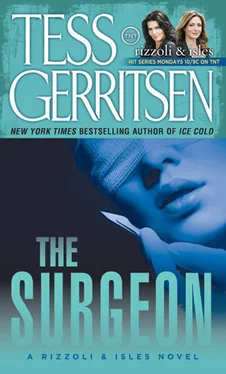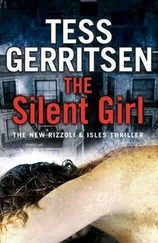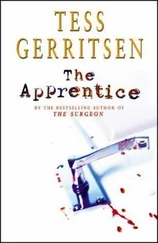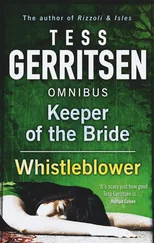Everyone who drives past an accident and cannot help but look for the blood understands this. Beneath the revulsion, the urge to turn away, throbs a greater force. Attraction.
We all want to look. But not all of us will admit it.
It is lonely, walking among the anesthetized. In the afternoon, I wander the city and breathe in air so thick I can almost see it. It warms my lungs like heated syrup. I search the faces of people on the street, and I wonder which among them is my dearest blood brother, as once you were. Is there anyone else who has not lost touch with the ancient force that flows through us all? I wonder if we would recognize each other if we met, and I fear we would not, because we have hidden ourselves so deeply beneath the cloak that passes for normality.
So I walk alone. And I think of you, the only one who ever understood.
As a physician, Catherine had looked at death so many times that its visage was familiar to her. She had stared into a patient’s face and watched life drain from the eyes, turning them blank and glassy. She had seen skin fade to gray, the soul in retreat, seeping away like blood. The practice of medicine is as much about death as it is about life, and Catherine had long ago made Death’s acquaintance over the cooling remains of a patient. She was not afraid of corpses.
Yet as Moore turned onto Albany Street and she saw the neat brick building of the Medical Examiner’s office, her hands broke out in a sweat.
He parked in the lot behind the building, next to a white van with the words “Commonwealth of Massachusetts, Office of the Medical Examiner” printed on the side. She did not want to leave the car, and only when he came around to open her door did she finally step out.
“Are you ready for this?” he asked.
“I’m not looking forward to it,” she admitted. “But let’s get it over with.”
Though she had viewed dozens of autopsies, she was not fully prepared for the smell of blood and ruptured intestines that hit her as they walked into the lab. For the first time in her medical career, she thought she would be sick at the sight of a body.
An older gentleman, eyes protected by a plastic face shield, turned to look at them. She recognized the M.E., Dr. Ashford Tierney, whom she had met at a forensic pathology conference six months before. A trauma surgeon’s failures were often the very subjects who ended up on Dr. Tierney’s autopsy table, and she had last spoken to him only a month ago, regarding the disturbing circumstances surrounding a child’s death from a ruptured spleen.
Dr. Tierney’s gentle smile contrasted jarringly with the blood-streaked rubber gloves he was wearing. “Dr. Cordell, it’s good to see you again.” He paused, as the irony of that statement struck him. “Though it could be under more pleasant circumstances.”
“You’ve already started cutting,” Moore noted in dismay.
“Lieutenant Marquette wants immediate answers,” said Tierney. “Every police shooting, the press is at his throat.”
“But I called ahead to arrange this viewing.”
“Dr. Cordell’s seen autopsies before. This is nothing new for her. Just let me finish this excision, and she can take a look at the face.”
Tierney turned his attention to the abdomen. With the scalpel, he finished slicing free the small bowel, pulled out loops of intestine, and dropped them into a steel basin. Then he stepped away from the table and nodded to Moore. “Go ahead.”
Moore touched Catherine’s arm. Reluctantly she approached the corpse. At first she focused on the gaping incision. An open abdomen was familiar territory, the organs impersonal landmarks, lumps of tissue that could belong to any stranger. Organs held no emotional significance, carried no personal stamp of identity. She could study them with the cool eye of a professional, and so she did, noting that the stomach and pancreas and liver were still in situ, waiting to be removed in a single bloc. The Y-incision, extending from the neck to the pubis, revealed both the chest and the abdominal cavity. The heart and lungs had already been excised, leaving the thorax an empty bowl. Visible in the chest wall were two bullet wounds, one entry just above the left nipple, the other a few ribs beneath it. Both bullets would have entered the thorax, piercing either heart or lung. In the left upper abdomen was yet a third entrance wound, tracking straight toward where the spleen would have been. Another catastrophic injury. Whoever had fired on Karl Pacheco had meant to kill him.
“Catherine?” said Moore, and she realized she had been silent too long.
She took a deep breath, inhaling the odor of blood and chilled flesh. By now she was well acquainted with Karl Pacheco’s internal pathology; it was time to confront his face.
She saw black hair. A narrow face, the nose as sharp as a blade. Flaccid jaw muscles, the mouth gaping. Straight teeth. She focused, at last, on the eyes. Moore had told her almost nothing about this man, just his name and the fact he had been shot by police while resisting arrest. Are you the Surgeon?
The eyes, corneas clouded by death, stirred no memory. She studied his face, trying to sense some trace of evil still lingering in Karl Pacheco’s corpse, but she felt nothing. This mortal shell was empty, and no trace of its former inhabitant remained.
She said, “I don’t know this man,” and she walked out of the room.
She was already waiting outside by his car when Moore emerged from the building. Her lungs had been fouled by the stench of that autopsy room, and she was taking breaths of scorchingly hot air, as though to wash out the contamination. Though she was now sweating, the chill of that air-conditioned building had settled in her bones, deep as the marrow.
“Who was Karl Pacheco?” she asked.
He looked off in the direction of Pilgrim Hospital, listening to the crescendoing wail of an ambulance. “A sexual predator,” he said. “A man who hunted women.”
“Was he the Surgeon?”
Moore sighed. “It appears not.”
“But you thought he might be.”
“DNA links him to Nina Peyton. Two months ago, he sexually assaulted her. But we have no evidence that connects him to Elena Ortiz or Diana Sterling. Nothing that places him in their lives.”
“Or in my life.”
“You’re sure you’ve never seen him?”
“I’m only sure that I don’t remember him.”
The sun had baked the car to oven heat, and they stood with the doors open, waiting for the interior to cool. Gazing across the car roof at Moore, she saw how tired he was. Already his shirt was blotted with sweat. A fine way to spend his Saturday afternoon, driving a witness to the morgue. In many respects, cops and doctors led similar lives. They worked long hours, at jobs for which there was no five o’clock whistle. They saw humanity in its darkest, most painful hours. They witnessed nightmares and learned to live with the images.
And what images did he carry? she wondered as he drove her home. How many victims’ faces, how many murder scenes, were stored like filed photographs in his head? She was only one element of this case, and she wondered about all the other women, living and dead, who had vied for his attention.
He pulled up in front of her building and turned off the engine. She looked up at her apartment window and was reluctant to step out of the car. To leave his company. They had spent so much time together over the last few days that she had come to rely on his strength and his kindness. Had they met under happier circumstances, his good looks alone would have caught her eye. Now what mattered most to her wasn’t his attractiveness, nor even his intelligence, but what lay in his heart. This was a man she could trust.
Читать дальше












